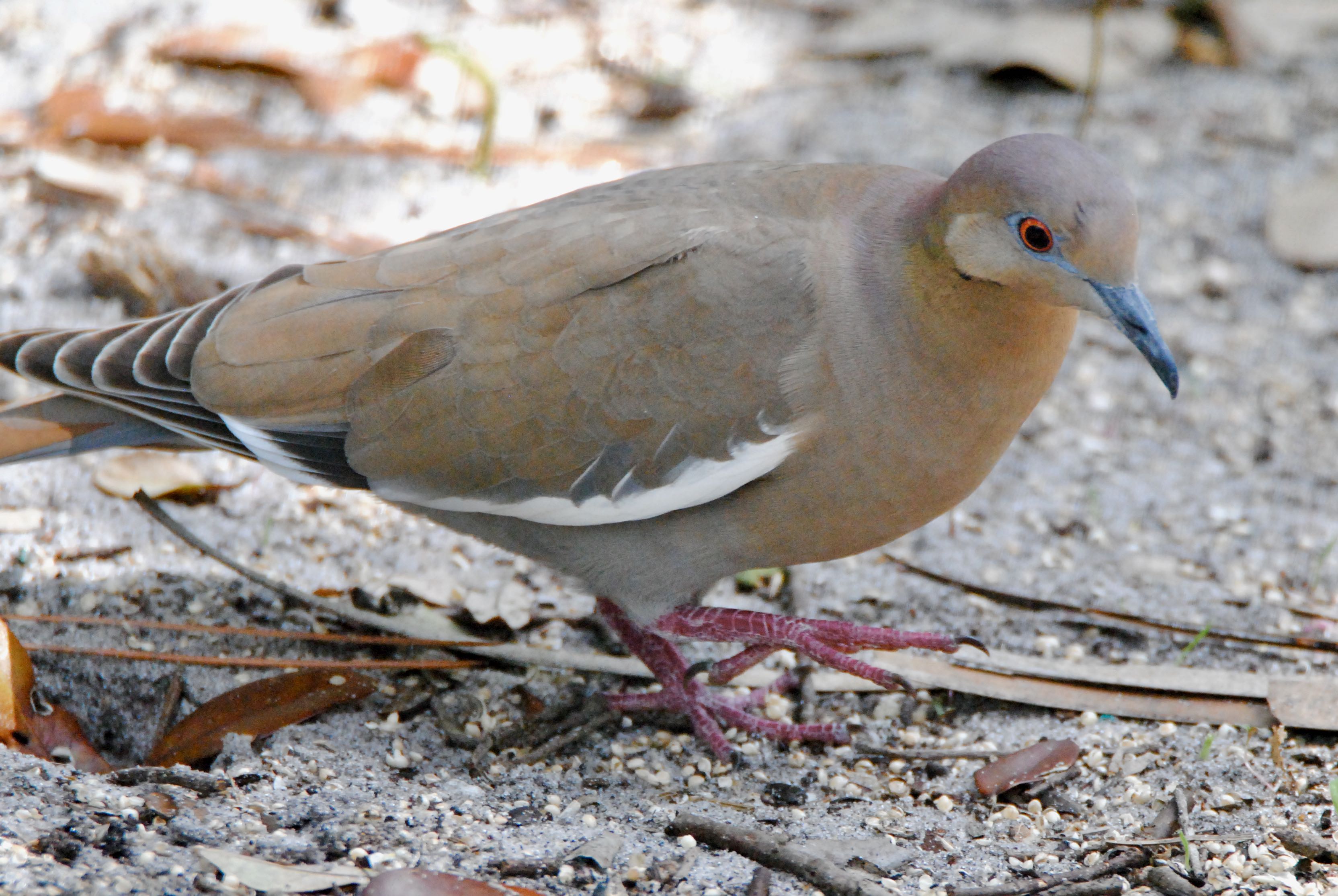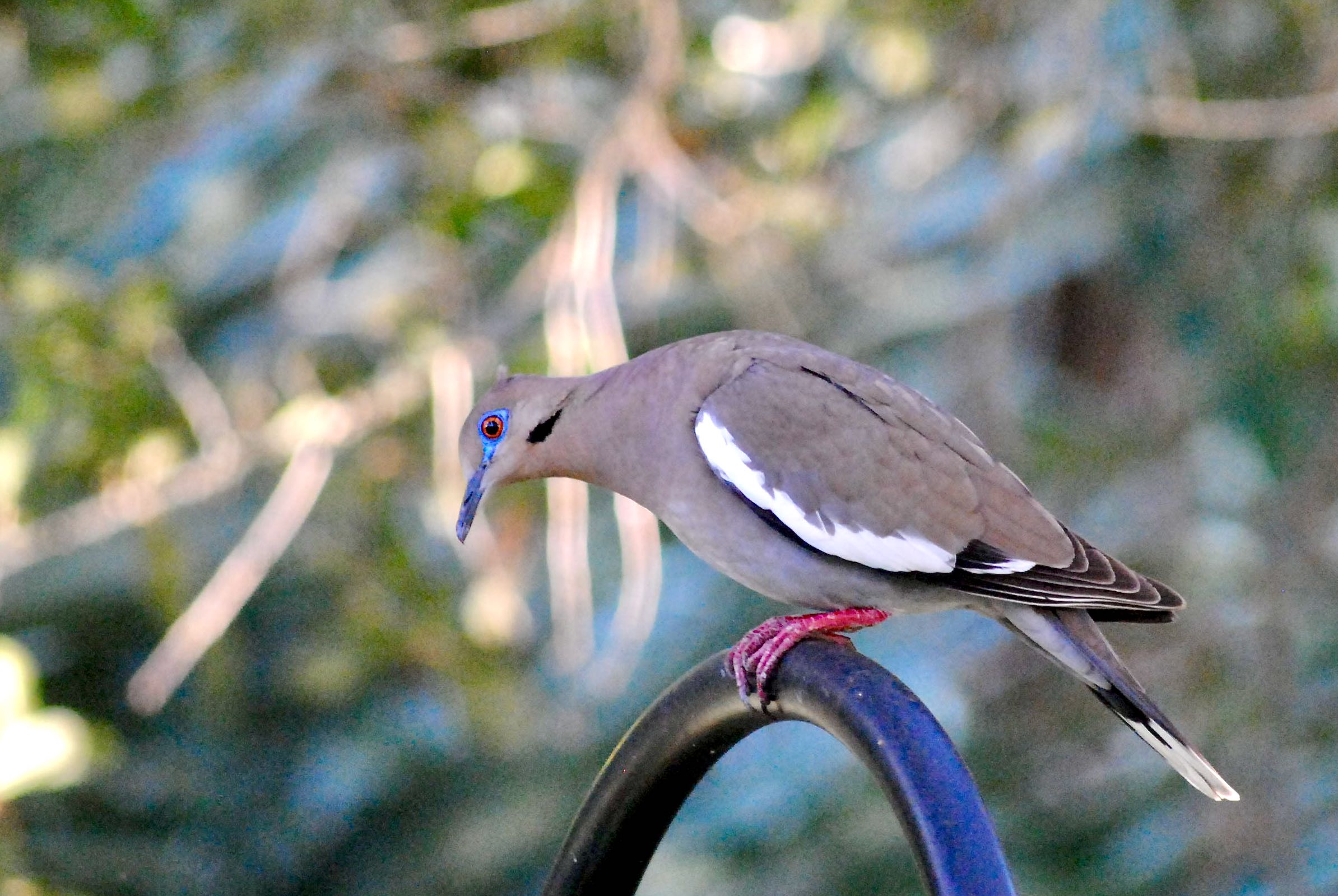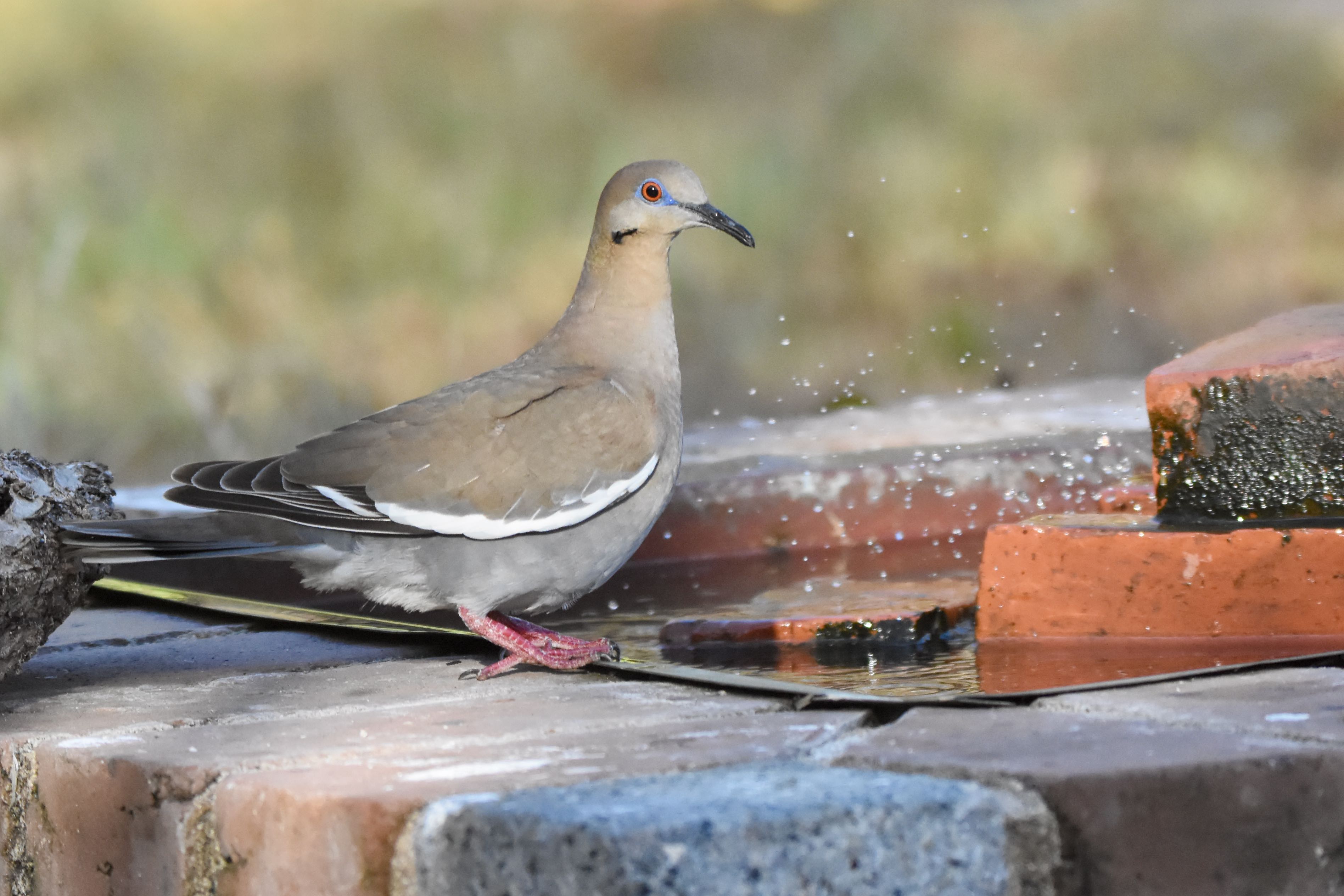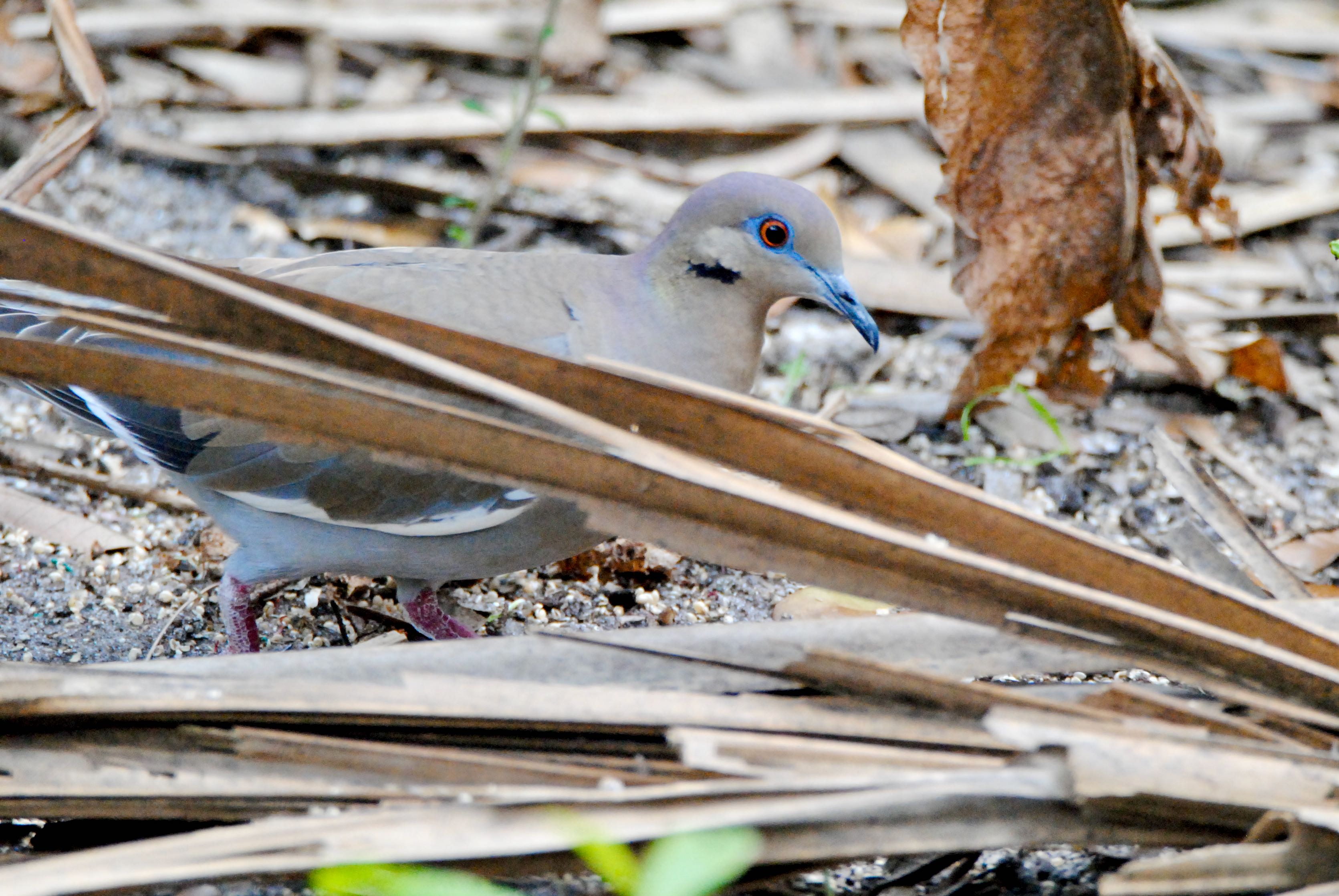
White-winged dove, photographed at Green Cay Nature Center, Boynton Beach, Palm Beach County, in February 2016.
The white-winged dove, Zenaida asiatica, is a bird of the desert Southwest that's made a home for itself in the subtropical Southeast.
Florida is and isn't part of its natural range. It's a native bird, if one that spends the winter months here can be called native, and it's an import. Sound confusing? It is, so let's start at the beginning.
White-winged doves are a mix of migratory and non-migratory birds with a range that extends from the southwestern United States, including California and Texas, through Mexico, Central America, the Caribbean, and portions of western South America. In the Southwest, their favorite habitat is scrub forests, but much of that has been lost as we humans converted the land into citrus groves and suburbs. White-winged doves have adapted to the new landscape, but in the process, pushed their winter range farther east along the Gulf Coast into Florida. Come spring, these snow birds vacate the Sunshine State and make for the Southwest. Florida also sees a few vagrants from the Caribbean, who fly here by accident.
However, there's also a population of white-winged doves that lives in Florida throughout the year and breeds here. According to the Florida Fish and Wildlife Conservation Commission, these birds are descendants of 10 pairs of doves brought in from Mexico and released into the wilds of Dade County in 1959. According to a more detailed account, one Frank M. Williams imported four pairs of doves from Mexico in 1956 and bred them until he had 30 birds three years later. In March 1959, he released 10 pairs, timing it so they would be more likely to mate immediately and remain in Florida rather than return to Mexico. It worked.
During the 1970s, the FWC captured 160 doves and released them in Lake, Marion and Highland counties. According to an FWC report done some years ago, white-winged doves were found year-round in 11 counties, including all of South Florida. The geographic footprint almost certainly has increased since then. In Polk County, roosts of more than 1,000 white-winged doves have been reported, says the FWC. Also according to an FWC report done in the early 2000s, all breeding white-winged doves in Florida are descendants of introduced birds, including those Williams imported more than 60 years ago.
Out west, the birds play a crucial role in the life of the saguaro cactus, the signature plant of the Sonoran Desert. The cactus returns the favor. White-winged doves eat the fruit of the saguaro and sip its nectar — a vital source of moisture for the bird. As the seeds pass through the digestive system, the dove spreads future cacti as it goes about its business and does its business. In Florida, however, white-winged doves will forage along the ground for seeds and through trees and shrubs for berries. They swallow small stones, which remain in their digestive system and help grind seeds.
White-winged doves are monogamous at least through the breeding season. Males select the territory where the nest is to be built, but females pick the final site. Males gather material — sticks, weeds, grass and moss — while females do construction. Clutches are one or two eggs that take two to three weeks to incubate. The offspring take two or three weeks to fledge. Both parents feed the young a secretion produced in their esophagus called crop or pigeon milk.
It's easy to overlook the white-winged dove as dull looking. But if you get a close look at the face you'll see a surprisingly pretty bird. It's stockier than its cousin, the mourning dove, and its song is different. It has markings on its neck like Eurasion collared dove, but they don't wrap around the neck like they do on the Eurasian. The broad, bright white markings on the wings that tell you what you're looking at.
White-winged doves are members of Columbidae, the family of doves and pigeons.
Click on photo for larger image
Links for White-Winged Dove



